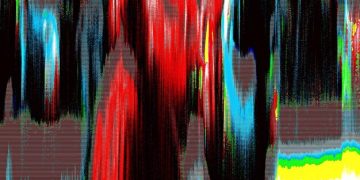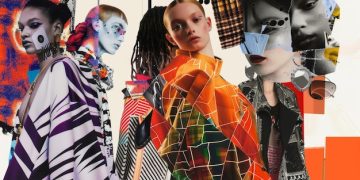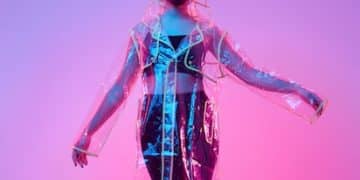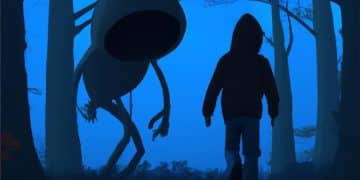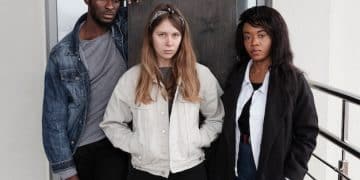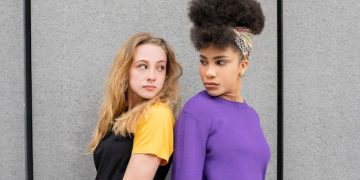Glitch Art in the US: From Digital Errors to Mainstream Art in 2025
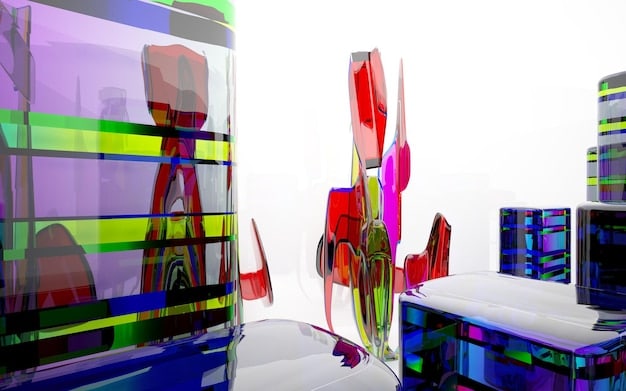
Glitch art, once a fringe movement celebrating digital imperfections, is rapidly gaining mainstream acceptance in the US, transforming errors into high art and influencing aesthetics across various creative fields by 2025.
The intentional embrace of digital errors, known as glitch art, is no longer confined to niche online communities; it’s permeating the mainstream art scene in the US, with significant implications expected by 2025.
The Origins of Glitch Art
To understand its current trajectory, let’s delve into the origins of Glitch Art.
Glitch art emerged from the digital underground, a defiant response to the pristine perfection of digital technology.
Early Influences
The roots of glitch art can be traced back to the mid-20th century, with influences from avant-garde movements and experimental cinema.
- Early computer music composers would sometimes make errors by underclocking processors and recording the artifacts that came out of it.
- Nam June Paik used video distortion in his work, creating the world’s first Glitch Art.
- Artists began to explore the aesthetic potential of broken or malfunctioning technology.
These early explorations laid the groundwork for the digital glitch art that would emerge later.
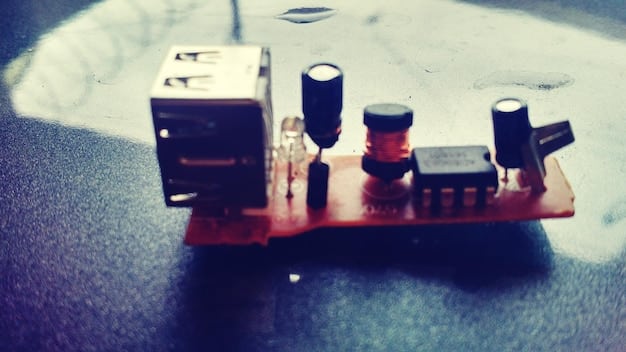
The Digital Revolution
The rise of the internet and personal computing democratized access to digital tools, leading to an explosion of glitch art creation.
The internet allowed artists to share their work and collaborate, forming online communities dedicated to the exploration of digital errors.
Early glitch artists shared techniques and software online to create art through broken systems.
The origins of glitch art are rooted in both artistic experimentation and technological advancements, with artists pushing the boundaries of what was possible with digital media.
Techniques and Aesthetics
Let’s get technical with the techniques and aesthetics employed by glitch artists to better understand the process.
Glitch art embraces a wide range of techniques, each with its own unique aesthetic.
From data manipulation to hardware hacking, artists find creative ways to generate visual and auditory errors.
Data Bending
Data bending involves directly manipulating the code of digital files, such as images or audio files.
- Changing text files with image file endings.
- Hex Editing: Using programs to directly edit or corrupt the code that makes up the file.
- Datamoshing: A more complex effect that removes all I-frames from video files, leaving behind only motion vectors.
These techniques can produce striking and unexpected visual results.
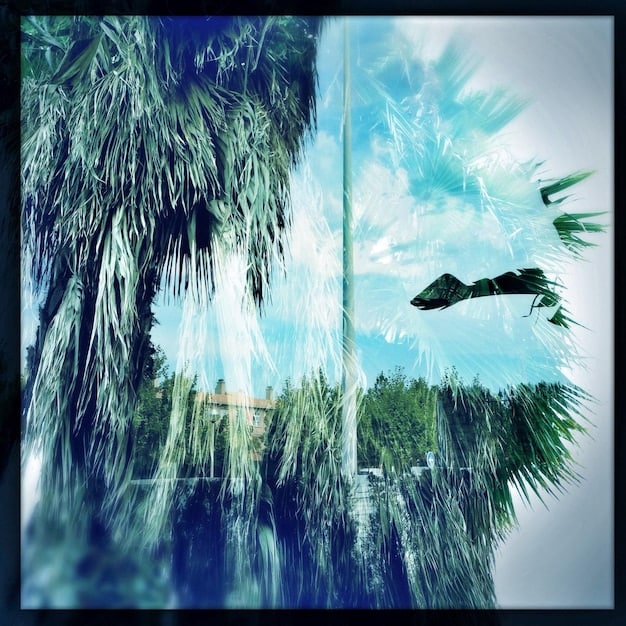
Hardware Hacking
Hardware hacking involves physically modifying or damaging electronic devices to create glitch effects.
This can range from simple circuit bending to more complex modifications of computer hardware.
Hardware hacking produces unpredictable and often chaotic results, reflecting the raw physicality of the technology.
Glitch art uses data manipulation and hardware modification to produce effects.
Glitch Art in Pop Culture
Glitch art has gained traction in pop culture. Let’s explore where.
Once confined to niche online communities, glitch art has begun to permeate mainstream pop culture, influencing music, fashion, and visual media.
This crossover appeal reflects a growing acceptance of digital imperfections and a desire for more authentic and unconventional aesthetics.
Music Videos
Many music videos now incorporate glitch effects to create a sense of chaos, disruption, or digital decay.
Artists like Kanye West, Radiohead, and Aphex Twin have all used glitch art in their music videos.
- These effects add a distinct visual dimension to the music, enhancing the overall artistic statement.
- The unexpected and jarring nature of glitch art can create a sense of unease or excitement, depending on the context.
- Some music videos apply extensive use of data manipulation and other visual glitches.
Glitch art in music videos elevates the aesthetic and overall artistic statement.
The Rise of Glitch Art in the US
The United States has emerged as a hub for glitch art innovation.
The US has a rich history of technological innovation and artistic experimentation.
Glitch art in this region reflects a growing interest in challenging conventional norms and embracing digital imperfections.
Art Galleries and Museums
Glitch art is increasingly being exhibited in art galleries and museums across the United States.
These exhibitions showcase the diverse range of glitch art forms, from static images and video installations to interactive digital experiences.
These displays are crucial for legitimizing glitch art as a valid art form.
Glitch art has found more ways into art galleries and pop culture.
The Impact of Glitch Art on Design and Advertising
Glitch art has also made its mark on design and advertising.
Brands looking to stand out from the crowd are increasingly turning to glitch art for its disruptive and attention-grabbing qualities.
Glitch art can convey a sense of innovation, technology, or even rebellion.
Advertising Campaigns
Many advertising campaigns now incorporate glitch effects to create a sense of modernity and edginess.
Glitchy visuals can disrupt the viewer’s expectations and draw attention to the product or message.
- The use of glitch art in advertising reflects a broader trend towards embracing imperfection and authenticity.
- Companies are willing to apply different types of innovative techniques and designs.
Digital Design
Glitch art is also influencing digital design, with designers incorporating glitch effects into websites, apps, and user interfaces.
These effects can add a sense of playfulness and experimentation to digital experiences.
Glitch art has an impact on advertising and design.
The Future of Glitch Art
And now, let’s look at what the future holds in store for this unique movement.
As technology continues to evolve, so too will glitch art.
The future of glitch art will be shaped by new technologies, social trends, and artistic movements.
New Technologies
Emerging technologies like artificial intelligence and virtual reality offer new possibilities for glitch art creation.
AI algorithms can be used to generate new and unexpected glitch effects.
- Virtual reality environments can create immersive and disorienting glitch art experiences.
- Glitch art is always changing as the tools used to create are adapted.
Social Trends
Social trends such as the rise of digital activism and the increasing awareness of digital privacy are also influencing glitch art.
Glitch art can be used as a form of protest, highlighting the flaws and vulnerabilities of digital systems.
More than ever, the future of glitch art is going to be affected by technology and social trends.
| Key Point | Brief Description |
|---|---|
| 💡 Origins | Emerged from digital subcultures, challenging digital perfection. |
| 🛠️ Techniques | Involves data bending and hardware hacking to create visual errors. |
| 🎵 Pop Culture | Influences music videos, fashion, and advertising with its unique aesthetic. |
| 📈 Future | New technologies and social trends may shape its evolution. |
FAQ About Glitch Art
▼
Glitch art is an aesthetic that embraces digital errors and malfunctions for artistic expression. It elevates imperfections into intentional design choices.
▼
Common glitch art techniques include data bending (manipulating file code), datamoshing (removing video frames), and hardware hacking (altering electronic devices).
▼
Glitch art has appeared in music videos, fashion, and advertising, lending an edgy and unconventional aesthetic to these mainstream cultural forms.
▼
The US has a history of technological innovation and celebrates counter-culture, leading to art that challenges norms and celebrates imperfections.
▼
New technologies like AI and VR can open new paths for glitch art, offering ways to create immersive and glitch-based experiences.
Conclusion
Glitch art’s growth from a subculture to a mainstream art form in the US reflects a broader cultural shift towards embracing digital imperfections and questioning conventional aesthetics. As we approach 2025, glitch art is poised to further influence design, media, and artistic expression.
